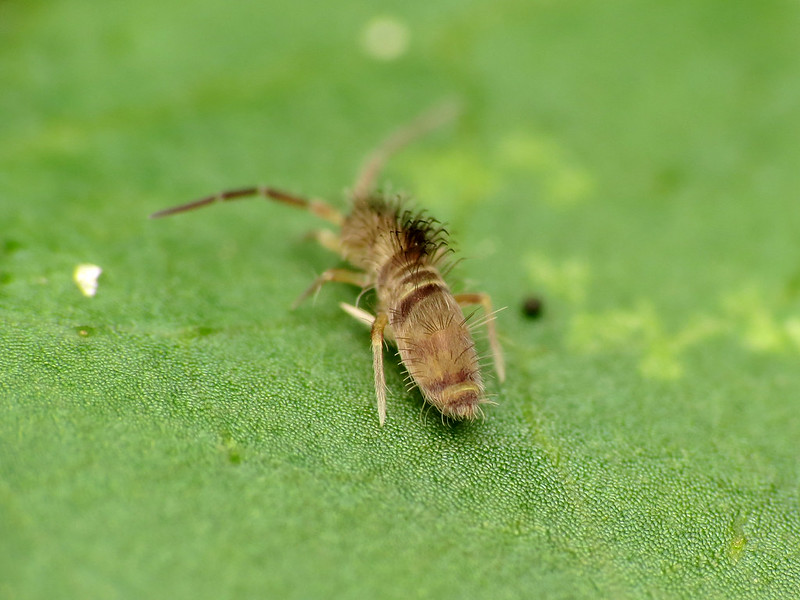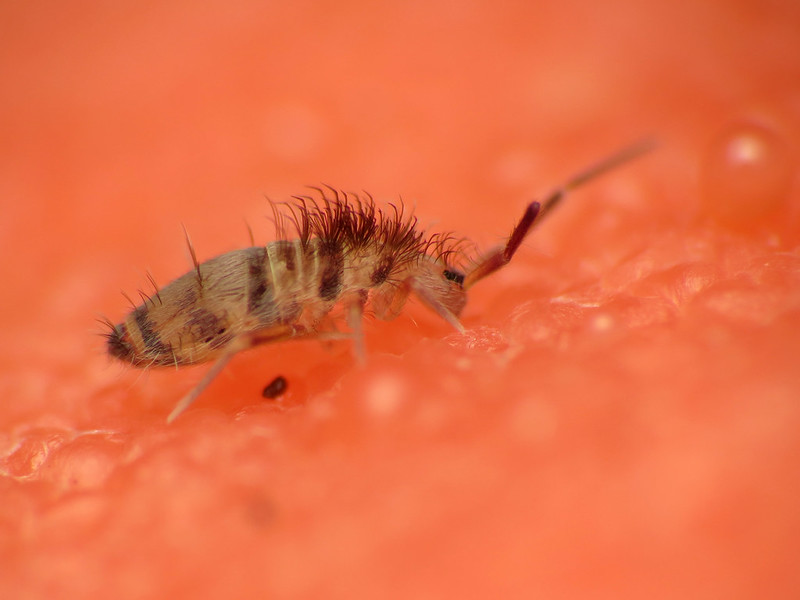Springtails are small, wingless insects that live in moist soil and decaying plant material. They don't bite or sting, but they can be a nuisance to homeowners because they can breed quickly and travel indoors from their muddy home outside. If you have noticed them around home, then it's time to take action against these pests before they get out of hand.
Springtails were named for their method of locomotion when disturbed — springing high in the air. This method involves a ventral "spring" (the furculum) on one of their abdominal segments. When this mechanism activates by an alarmed/frightened tiny animal-like themselves, it can propel them as far as 1-2 in (4-5 cm). The distance they travel many times greater than their body length enabling Springtails to escape from predators such as soil-dwelling mites and nasty spiders who typically prey upon these insects.
This blog will discuss what springtails are and how you can prevent an infestation at your house. We will also provide tips to identify signs of a springtail infestation so that you can contact a pest control specialist if necessary.
What are Springtails?
While mosquitoes, ticks, and stinging insects disappear in cold weather, springtails are sometimes found hopping around in freshly fallen snow. Springtails, also known as snow fleas, actually aren't a type of flea but get their unique nickname from their ability to jump as one would see on a real-life flea. These tiny creatures use proteins within them which allow them to survive harsh winters without much trouble at all - they're pretty resilient little guys!

Where are Springtails found?
Springtails are small, wingless insects that live in moist environments. They can be found throughout the United States and prefer very moist conditions such as wet soil or decaying logs. In winter, they're most active on sunny days when their populations skyrocket near plants where snow has melted at ground level. They prefer these locations because they tend to stay close to damp surfaces like leaves or grasses during cold months to keep warm while battling the freezing temperatures.
Where do springtails lay eggs?
They lays eggs singly or in clusters on moist areas. The immature springtails undergo 5 to 10 molts before they become adults, and the adult continues to molt up to 50 times in their life with an increase in size after the 15th molt.
Are springtails harmful to humans?
Springtails are not very dangerous to people, pets, or plants either. They will not damage your home, and they're considered a nuisance pest by their presence alone.
What smell do springtails hate?
The high acidity content of vinegar can be used as a natural insecticide by burning and killing springtails. If you are dealing with an infestation, this solution may get expensive because it will take repeated pours to see the effects.
Springtail Prevention
Springtails are insects that feed on decaying organic matter, helping decomposition. They also help to create a healthy soil environment for plants and animals alike! However, if they find their way inside your home, it can be quite annoying as there is no health threat- but just the mere presence of them in your house could indicate a moisture issue which should be investigated immediately!

What Does a Springtail look like?
The name "springtail" comes from both their ability to jump, as mentioned above and these small invertebrates' furca, a forked tail-like appendage attached to the abdomen of many springtails. The "grasshopper" like creatures use their furcae as tiny springs, allowing them to jump away from danger like miniature grasshoppers or fleas. A springtail's fucra is found under its body on its side, and not all species have one. If you see an individual walking or eating, then the fucra attaches tightly in place to not lose balance. Still, when this little creature wants to take off, it releases it's fucra with an explosive force using it's fucra as catapults!
Springtails are champions at jumping, as they would be able to jump over 10-story buildings if they were the size of humans.
The springtail uses their collophore, a tube-like structure, to attach themselves onto surfaces. The collaphore allows them to stick or hold on to a surface when landing instead of falling off from all the momentum during takeoff and descent.
As one of the six-legged creatures in existence, springtails are often blind and communicate through antennae. The more common organisms out there tend to have eight eyes with two or four on each side of their heads for proper orientation when searching for food around them but not these insects, they are completely blind.
How do you catch a Springtail?
The fact is that most people who are interested enough to look for a real springtail, like you, need to know where and how. Unlike house flies or butterflies, which we usually see right in front of our eyes when they land on the windowpane as if it were their runway, there's not much chance of spotting one with just your naked eye alone.
Springtails hide under wet fallen leaves or mosses; some large species may be hiding underneath decaying bark from old trees, while smaller ones could creep around inside flower pots. However, flowerpot springtails are pretty rare due to other bugs taking up residence there already. When looking for them (which might take patience), remember: They're everywhere but so clever!
If you find a springtail, it's best to observe how they crawl and jump. You can then take photos of them for some fun science! Web platforms like iNaturalist or Flickr have thousands of people who took pictures from around the world that might help scientists understand the unique characteristics of these pesty pests.
Catching a springtail can be easy if you use an entomological aspirator. If not, try using a Tullgren funnel to grab the bugs from their habitats like leaf litter and soil.
Blog written in association with growthboundmarketing.com
